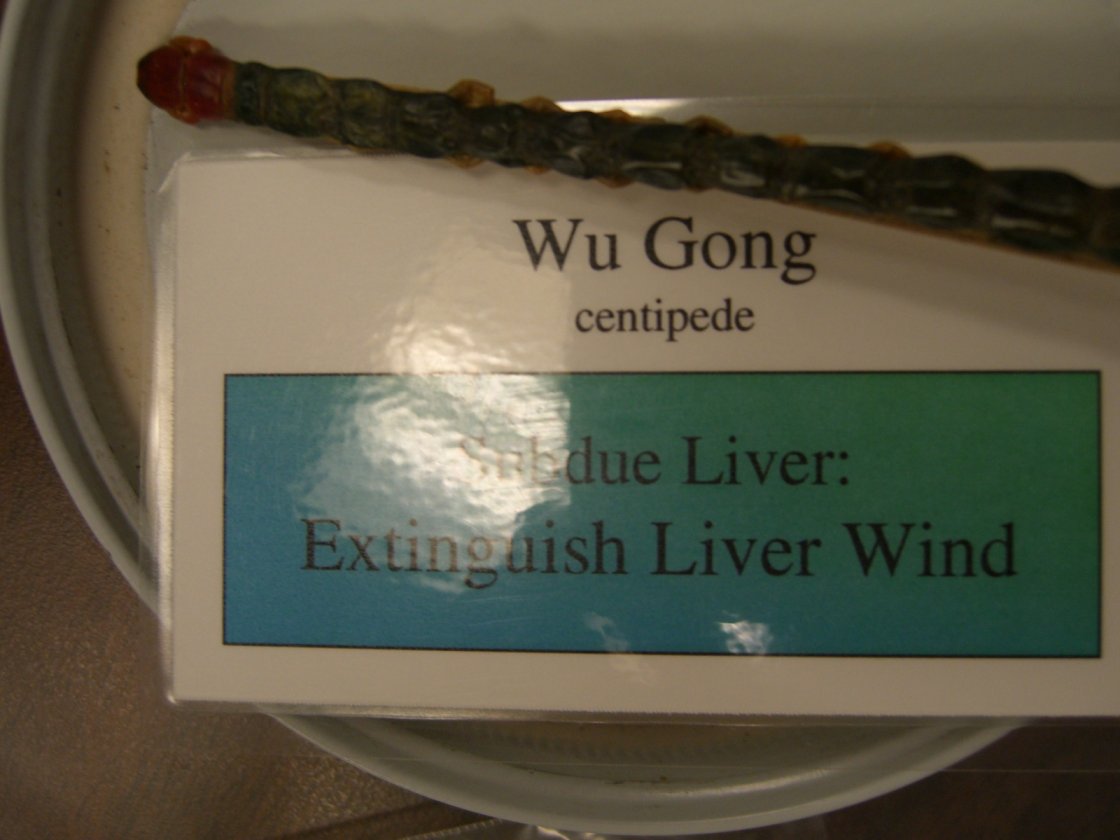Wu Gong

  | Wu Gong in TCM:Explore the properties of Wu Gong according to Chinese
Nutrition and Traditional Chinese Medicine (TCM):
Factoids:
English Name: centipede
Pharmacuetical Name: Scolopendra
Properties: toxic, acrid,
warm
Temperature: warm
Channels: LV
Flavors: toxic, pungent
Special Properties:
eliminates toxins, disperses wind, reduces swelling, alleviates bi syndrome
Actions / Indications:
- Extinguishes wind; stops spasms and convulsions (acute
and chronic childhood convulsions, opisthotonus, tetanus, seizures)
- Attacks and relieves toxins, dissapates nodules (topical
or internal use on toxic nodules, sores, carbuncles, scrofula, poisonous
snake bites)
- Opens Channels to stop pain (stubborn headache, migraines,
painful bi, sequelae of stroke)
- (cc: pregnancy)
- (cc: caution overdose due to toxicity)
- (cc: wind due to blood deficiency)
Special Notes:
- There is no need to remove the head and tail, as studies show that Wu Gong is strongest when used whole.
Disclaimer: In accordance with our terms of service, by using this web site you agree that none of the information found on this web site constitutes medical advice. You should always consult your doctor before trying any particular food or herbal remedy to treat disease.
Folk remedies presented on this site are designed to address specifc TCM diagnoses, and are not one-size-fits-all. If you would like to learn more about Traditional Chinese Medicine (TCM) and how it relates to Chinese Nutrition, you can book in a free call with a licensed professional. There is no obligation to purchase.
[CLICK HERE for your free INITIAL CONSULTATION] |

